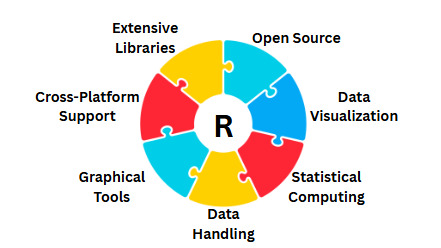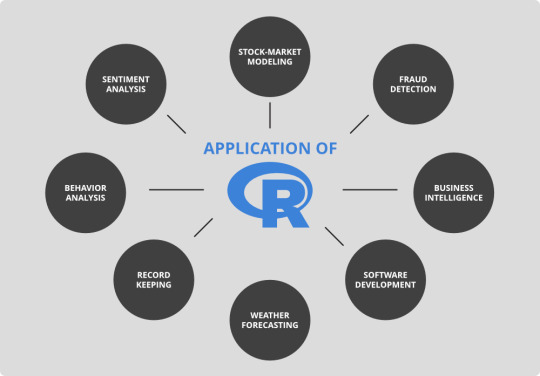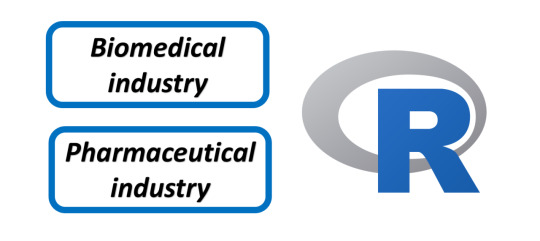#DataScience2025
Explore tagged Tumblr posts
Text
Uncovering the Real ROI: How Data Science Services Are Driving Competitive Advantage in 2025
Introduction
What if you could predict your customer’s next move, optimize every dollar spent, and uncover hidden growth levers—all from data you already own? In 2025, the real edge for businesses doesn’t come from owning the most data, but from how effectively you use it. That’s where data science services come in.
Too often, companies pour resources into data collection and storage without truly unlocking its value. The result? Data-rich, insight-poor environments that frustrate leadership and slow innovation. This post is for decision-makers and analytics leads who already know the fundamentals of data science but need help navigating the growing complexity and sophistication of data science services.
Whether you’re scaling a data team, outsourcing to a provider, or rethinking your analytics strategy, this blog will help you make smart, future-ready choices. Let’s break down the trends, traps, and tangible strategies for getting maximum impact from data science services.
Section 1: The Expanding Scope of Data Science Services in 2025
Gone are the days when data science was just about modeling customer churn or segmenting audiences. Today, data science services encompass everything from real-time anomaly detection to predictive maintenance, AI-driven personalization, and prescriptive analytics for operational decisions.
Predictive & Prescriptive Modeling: Beyond simply forecasting, top-tier data science service providers now help businesses simulate outcomes and optimize strategies with scenario analysis.
AI-Driven Automation: From smart inventory management to autonomous marketing, data science is fueling a new level of automation.
Real-Time Analytics: With the rise of edge computing and faster data streams, businesses expect insights in seconds, not days.
Embedded Analytics: Service providers are helping companies build intelligence directly into products, not just dashboards.
These services now touch nearly every business function—HR, operations, marketing, finance—with increasingly sophisticated tools and technologies.
Section 2: Choosing the Right Data Science Services Partner
Selecting the right partner is arguably more critical than the tools themselves. A good fit ensures strategic alignment, faster time to value, and fewer rework cycles.
Domain Expertise: Don’t just look for technical brilliance. Look for providers who understand your industry’s unique metrics, workflows, and regulations.
Tech Stack Compatibility: Ensure your provider is fluent in your existing environment—whether it’s Snowflake, Databricks, Azure, or open-source tools.
Customization vs. Standardization: The best data science services strike a balance between reusable IP and tailored solutions.
Transparency & Collaboration: Look for vendors who co-build with your internal teams, not just ship over-the-wall solutions.
Real-World Example: A retail chain working with a generic vendor struggled with irrelevant models. Switching to a vertical-focused data science services provider with retail-specific datasets improved demand forecasting accuracy by 22%.
Section 3: Common Pitfalls That Derail Data Science Projects
Despite strong intent, many data science initiatives still fail to deliver ROI. Here are common traps and how to avoid them:
Lack of a Clear Business Goal: Many teams jump into modeling without aligning on the problem statement or success metrics.
Dirty or Incomplete Data: If your foundational data layers are unstable, no algorithm can fix the problem.
Overemphasis on Accuracy: A highly accurate model that no one uses is worthless. Focus on adoption, interpretability, and stakeholder buy-in.
Skills Gap: Without a strong bridge between data scientists and business users, insights never make it into workflows.
Solution: The best data science services include data engineers, business translators, and UI/UX designers to ensure end-to-end delivery.
Section 4: Unlocking Hidden Opportunities with Advanced Analytics
In 2025, forward-thinking firms are using data science services not just for problem-solving, but for uncovering growth levers:
Customer Lifetime Value Optimization: Predictive models that help decide how much to spend and where to focus retention.
Dynamic Pricing: Real-time adjustment based on demand, inventory, and competitor moves.
Fraud Detection & Risk Management: ML models can now flag anomalies within seconds, preventing millions in losses.
ESG & Sustainability Metrics: Data science is enabling companies to report and optimize environmental and social impact.
Real-World Use Case: A logistics firm used data science services to optimize delivery routes using real-time weather, traffic, and vehicle condition data, reducing fuel costs by 19%.
Section 5: How to Future-Proof Your Data Science Strategy
Data science isn’t a one-time investment—it’s a moving target. To remain competitive, your strategy must evolve.
Invest in Data Infrastructure: Cloud-native platforms, version control for data, and real-time pipelines are now baseline requirements.
Prioritize Model Monitoring: Drift happens. Build feedback loops to track model accuracy and retrain when needed.
Embrace Responsible AI: Ensure fairness, explainability, and data privacy compliance in all your models.
Build a Culture of Experimentation: Foster a test-learn-scale mindset across teams to embrace insights-driven decision-making.
Checklist for Evaluating Data Science Service Providers:
Do they offer multi-disciplinary teams (data scientists, engineers, analysts)?
Can they show proven case studies in your industry?
Do they prioritize ethics, security, and compliance?
Will they help upskill your internal teams?
Conclusion
In 2025, businesses can’t afford to treat data science as an experimental playground. It’s a strategic function that drives measurable value. But to realize that value, you need more than just data scientists—you need the right data science services partner, infrastructure, and mindset.
When chosen wisely, these services do more than optimize KPIs—they uncover opportunities you didn’t know existed. Whether you’re trying to grow smarter, serve customers better, or stay ahead of risk, the right partner can be your unfair advantage.
If you’re ready to take your analytics game from reactive to proactive, it may be time to evaluate your current data science service stack.
#DataScience2025#FutureOfAnalytics#AdvancedAnalytics#AITransformation#MachineLearningModels#PredictiveAnalytics#PrescriptiveAnalytics#RealTimeData#EdgeComputing#DataDrivenDecisions#RetailAnalytics#SupplyChainOptimization#SmartLogistics#CustomerInsights#DynamicPricing#FraudDetection#SaaSAnalytics#MarketingAnalytics#ESGAnalytics#HRAnalytics#DataEngineering#MLOps#SnowflakeDataCloud#AzureDataServices#Databricks#BigQuery#PythonDataScience#CloudDataPlatform#DataPipelines#ModelMonitoring
0 notes
Text
Start your 2025 data science journey with the right steps—learn Python, SQL, statistics, data visualization, and machine learning. Build real-world projects and grow job-ready skills that align with today’s industry demands. Whether you're a student or a career switcher, this is your year to break into data science with confidence.
0 notes
Text
Why R Still Matters in the Data-Driven World of 2025
A Brief History of R
R, a language and environment for statistical computing and graphics, was conceived in the early 1990s by Ross Ihaka and Robert Gentleman at the University of Auckland, New Zealand. It was designed as a free and open-source alternative to expensive statistical software, democratizing data analysis and visualization. Over the years, R has evolved into a powerful tool embraced by data scientists, statisticians, and analysts worldwide. Its community-driven development model has resulted in a vast ecosystem of packages that enhance its core capabilities.

Why learn R
How R Differs from Python or Excel
While Python, Excel, and R are all popular tools for data manipulation and analysis, they serve different niches:
Python is a general-purpose programming language with extensive libraries for machine learning and data manipulation, such as NumPy, pandas, and TensorFlow. It is known for its versatility and readability.
Excel is a spreadsheet software that provides a user-friendly interface for organizing and analyzing data. It is ideal for small to medium-sized datasets and is widely used in business settings.
R, however, is specifically designed for statistical computing. Its syntax and functions are tailored for data analysis tasks. R excels in advanced statistical modeling, making it a go-to choice for statisticians and researchers.
Key Features of R for Statistical Computing
R offers a range of features that make it indispensable for statistical analysis:
Comprehensive Statistical Techniques: R provides a wide array of statistical tests, models, and data mining techniques directly out of the box.
Data Visualization: With packages like ggplot2, R allows users to create sophisticated and interactive graphics that help in data exploration and presentation.
Extensibility: R's package ecosystem is vast, with over 18,000 packages available on CRAN (Comprehensive R Archive Network), ensuring there is a tool for almost every statistical task.
Reproducibility: R Markdown and R scripts facilitate the documentation of analysis steps, ensuring that results can be reproduced and verified.

Feature of R
Where R Is Used Today
R's application spans a variety of fields, highlighting its versatility and robustness:
Academia: R is a staple in academic research, used for teaching statistics and research methods across disciplines.
Government: Agencies such as the U.S. Census Bureau leverage R for data analysis and reporting.
Healthcare: R is employed for bioinformatics, epidemiological research, and clinical trial data analysis.
Finance: Financial analysts use R for risk assessment, portfolio management, and predictive modeling.
Research Labs: R is a trusted tool in scientific research for data exploration and hypothesis testing.

Application of R Language
Real-World Hook: WHO and Pharma Companies
The World Health Organization (WHO) and pharmaceutical companies rely heavily on R for public health insights. During the COVID-19 pandemic, R was utilized for modeling the spread of the virus, analyzing vaccine efficacy, and tracking public health interventions. Pharmaceutical companies use R for drug discovery, clinical trial analysis, and regulatory submissions, underscoring its critical role in advancing healthcare outcomes.

Real World Application
FAQs
1. Is R difficult to learn for beginners?
R can have a steeper learning curve compared to Excel, but numerous online resources and communities can help beginners get started. Its powerful features make the initial effort worthwhile.
2. Can R handle large datasets efficiently?
While R is not inherently optimized for big data, packages like data.table and connections to databases or big data platforms like Hadoop can enhance its capability to handle large datasets.
3. How does R ensure the reproducibility of results?
R Markdown and version-controlled scripts promote reproducibility by documenting each step of the analysis, allowing others to replicate the results seamlessly.
4. Are there any industries where R should not be used?
R is less suited for real-time analytics or applications requiring high-speed computation, such as gaming or streaming services. However, for statistical analysis, it's highly effective.
5. What resources are available for learning R?
There are numerous free resources, including the R documentation, online courses on platforms like Coursera and edX, and community forums like RStudio Community and Stack Overflow.
Home
instagram
youtube
#RProgramming#DataDrivenWorld#StatsWithR#DataScience2025#AnalyticsTools#OpenSourceStats#RvsPython#TechForGood#ResearchWithR#SunshineDigitalServices#Instagram#Youtube
0 notes
Text
Explore the latest tools and trends in generative AI and data science for 2025 in this must-read blog: Generative AI and Data Science: Top Tools & Trends for 2025. Discover how emerging technologies are shaping innovation, enhancing workflows, and redefining business intelligence. This guide dives into powerful platforms, real-world applications, and future predictions that matter. Perfect for professionals, businesses, and tech enthusiasts looking to stay ahead of the curve. Don’t miss out on what’s next in AI-driven transformation.
#GenerativeAI#DataScience2025#AITools#TechTrends#AIInnovation#FutureOfData#BusinessIntelligence#MachineLearning#AIInsights
0 notes